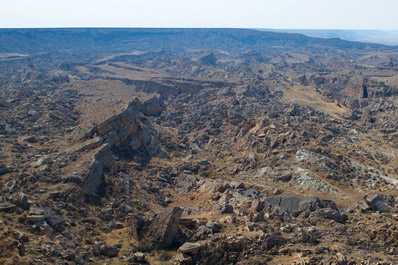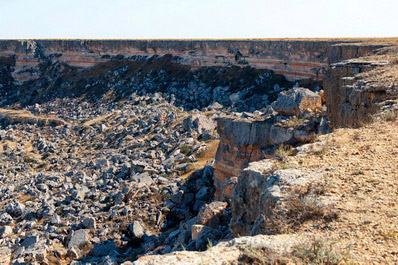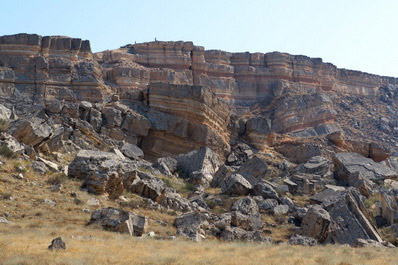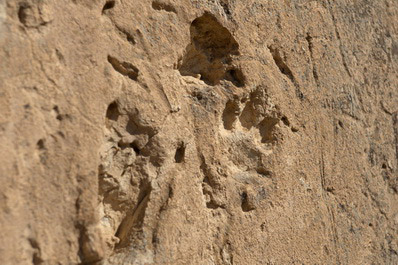The Fallen Land of Zhygylgan, Mangystau
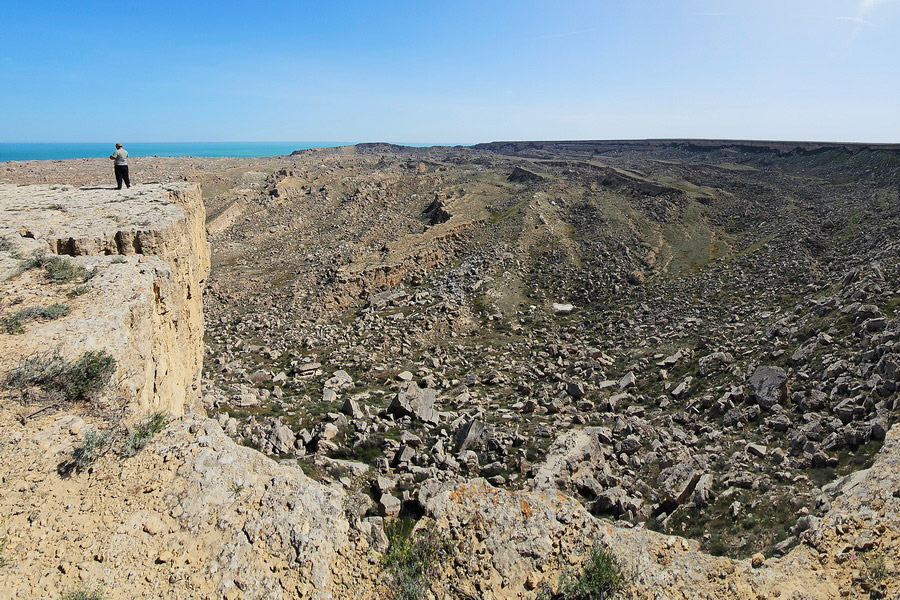
Zhygylgan is a geological phenomenon whose name means "fallen earth" in Kazakh. This site features a massive stone layer, up to 50 meters thick and spanning 2 by 4 km, that collapsed into a void, shattering into thousands of huge fragments. This event occurred thousands of years ago, and nature is gradually smoothing out the cataclysm's aftermath.
The formation of this failure is linked to tectonic plate movements. Scientists theorize that a significant horizontal shift occurred in the distant past, causing the hard stone slab on top to push the softer rock slab below towards the Caspian Sea. Simultaneously, the upper slab began to fall under its own weight, breaking into pieces.
This area was once part of the Tethys Ocean floor. As the water level dropped, the slab became a shallow sea bed where horses and saber-toothed tigers roamed. Today, at the bottom of the Zhygylgan fault, you can find fossilized traces of these ancient animals on the rock fragments, dating back 10-15 million years. To see these footprints, descend from the southeastern edge of the cavity, ideally in comfortable trekking shoes.
Zhygylgan fault is located near the shore of the Caspian Sea, 110 km north of Aktau. The journey is half asphalt road and half dirt road. The town of Fort-Shevchenko is 45 km west of the failure, and Shakpak-ata Mosque is 45 km east. Zhygylgan is often included in one-day tours from Aktau, along with these other attractions.

